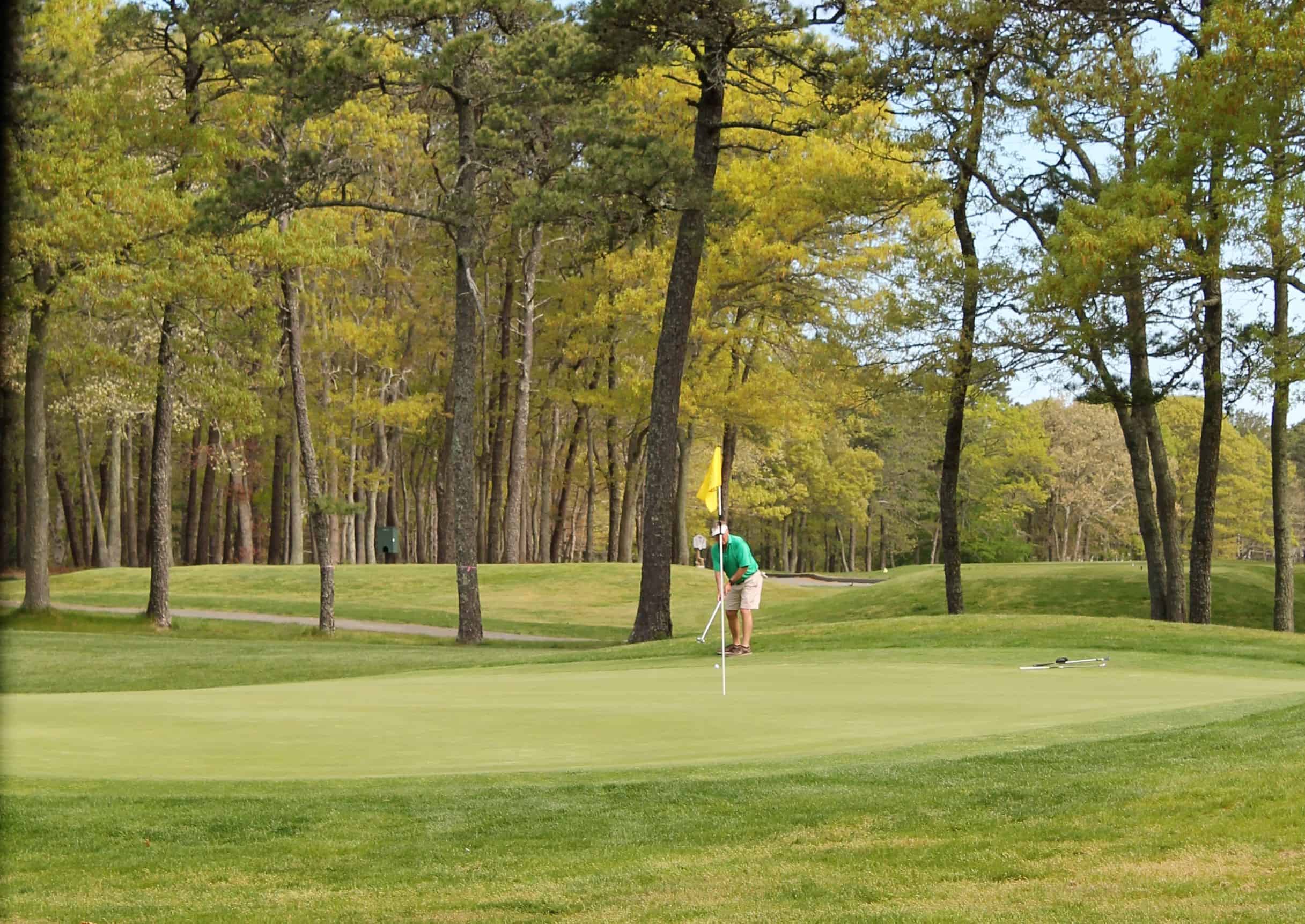By Rob Duca
There are few better ways to remove stress from your game and shoot lower scores than by becoming a great lag putter. Imagine learning to lag putts close to the hole and instead of facing a white-knuckle, knee-knocking, hold-your-breath second putt, hearing the soothing words from your playing partners, “That’s good.”
Tour professionals seem to gauge the speed accurately from just about any range, and with a bit of practice and a few helpful drills, you can too.
Here are six drills that will have you lagging putts stone-dead with more consistency.
- Measure It Out
Next time you head to the practice green, bring along a tape measure. The goal with this drill is to measure the length of your backstroke from multiple distances. Place balls 30, 40, 50 and 60 feet from the hole, and extend the tape measure 30 inches. The idea is to measure the length of your backstroke on putts from each distance. (You’ll need a partner to record this).
Hit putts from each of the distances and measure how far back you needed to take the putter to get the ball close to the hole. With practice, you’ll gain a feel for the necessary backstroke for each required distance.
- Speed Control
Feel is everything in the short game, especially on the greens. When you combine the desired backstroke with the optimal power on the downstroke you’ll develop feel and consistency.
Place balls 40, 50 and 60 feet from the hole and pick a target near the cup, hitting putts from each distance until you have hit your target 100 percent of the time. Begin at the shorter distances and move back only after you’ve succeeded at each distance.
- The Manilla Folder Drill
Judging the speed on a long putt usually includes variables. It’s not often you’ll face a completely flat putt with no slope. Here’s a drill for helping with downhill putts when you want to trickle the ball toward the hole, leaving a tap-in for your second putt.
Place a manilla folder on the green and practice stopping the ball on the folder as though it were at the top of a slope. Start at 20 feet and then move to 40 and 50 feet, with the idea that if the manilla folder was at the top of the slope, gravity would then take over and send the ball softly to the hole.
- Channel Your Inner Tiger
If a putting drill is embraced by Tiger Woods, it’s probably one you should try. If your putter is not square through impact, you won’t be a successful lag putter even if your feel and speed control is perfectly fine tuned. In order to be sure his putter was square through impact, Tiger would place two tees parallel to each other, approximately two inches in front, forming a gate barely wider than his putter head. He practiced sending the ball through the gate to produce a straight roll.
Employ this drill from multiple long distances, with the goal of getting the ball within a radius of three feet from the hole.
- Get In the Zone
You probably already know that confidence is the key to good putting. If you believe you will make a putt, your chances improve considerably, because that leads to a confident stroke.
This drill will teach you to hit putts with conviction that get to the hole. Place an alignment stick three feet past the hole and practice putting to the stick, not the hole, from 20, 30, 40 and 50 feet. The idea is to stop your ball between the cup and the alignment stick. Get this drill down and you’ll be amazed at how many times you’re left with two-footers. Your ball might even find the hole a few times.
- Think Small
What does that mean? Don’t think about making that 30-footer; think about leaving it in the center of a circle that’s six feet in diameter. By removing the pressure of trying to drain the putt, you’ll eliminate tension in your hands and develop greater feel.


